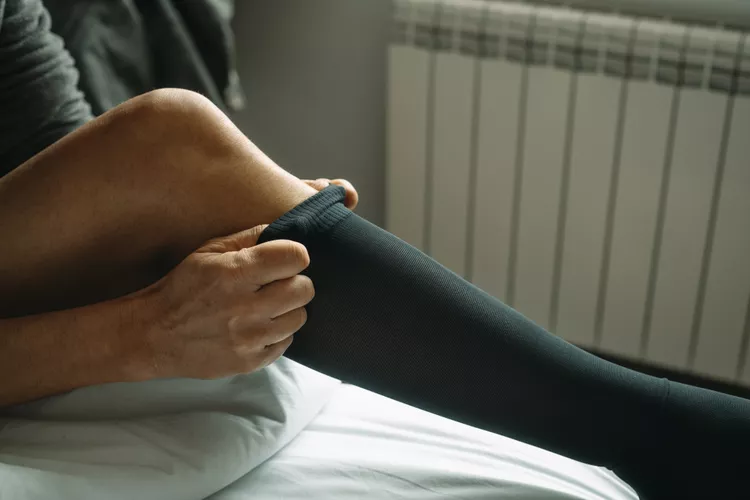Do You Truly Have to Wear Pressure Socks on a Long Flight?
If you want to stay comfortable on a long-haul flight, preparation is essential, and many TikTokers suggest adding the following to your checklist before the flight: putting on socks with compression.
Because they help improve circulation, compression socks, also known as compression stockings, are frequently associated with aging. However, a recent TikTok trend has individuals, regardless of age or health status, displaying their compression socks and encouraging others to do the same on long flights
One creator, whose video has received over 220,000 views, stated, “I travel a lot,” and “one of my biggest tips I can give you guys—it’s always important to wear these compression socks—no matter what class you’re traveling in.”
But are there any health benefits to wearing compression socks on long flights for everyone? The essential information about these socks, including who should consider wearing them while flying, can be found here.

How do compression socks work and what are they?
By gently squeezing the calves and feet, compression socks are designed to increase blood flow and prevent blood clots by stimulating circulation.
According to David Steensma, MD, chief medical officer of Ajax Therapeutics and a hematologist, “squeezes fluid from the feet and lower legs back towards the center of the body.” The swelling in the feet, ankles, and lower legs is reduced by this squeezing.
The majority of compression socks are made of elastic fabric and stretch to the calf, thigh, or waist1. They are available in a variety of tension levels, from low (less than 20 millimeters of mercury (mmHg)) to high (more than 30 mmHg).
While higher compression levels may require a prescription, socks with relatively low compression levels can be purchased over-the-counter.
What is the connection between flying and compression socks?
Compression socks are sometimes suggested by doctors for flights because they can increase blood flow. Sitting for significant stretches, as on a short-term flight, can negatively affect flow.
According to Leo Reap, DO, a hematologist at Ascension Michigan, “blood flow can become sluggish in the veins, which can cause pooling in the lower legs” during a flight. This makes it more likely that there will be a clot, especially if the flight is longer than four hours.
Deep vein thrombosis (DVT), which can be caused by blood clots in the veins, can result in long-term complications.
Steensma stated, “Clots can injure the veins and cause the veins to dilate, including the development of varicose veins.” Long-term swelling may result from the veins’ inability to carry blood to the center of the body.
Reap asserts that the likelihood of developing a blood clot is “relatively proportional” to the length of the flight. It is “highest on transoceanic flights, where people tend to stay still for a long time.”
Who Ought to Wear Pressure Socks While Flying?
The American Culture of Hematology suggests pressure socks for individuals flying for something like four hours who are at high gamble of fostering a blood coagulation. This includes people who have recently had surgery, a history of venous blood clots, just had a baby, or have an active cancer. However, Reap said that compression socks can be helpful for anyone, no matter how old they are or what their medical history
He stated, “They are helpful on any flight to reduce lower extremity swelling or discomfort.” They are affordable for anyone to use when traveling for more than four hours and can increase passenger comfort while flying.
Reap added that wearing compression socks does not carry any significant risks, “aside from potential slight discomfort if stockings are used that are too tight.” However, Steensma stated that they may also result in minor bruising or skin irritation.
Different Procedures to Forestall Blood Clusters While Flying
While wearing compression socks does not guarantee that you will not develop blood clots while flying, they can reduce swelling and the risk of blood clots.
Steensma cautioned, “The benefit of compression stockings is limited, so even if you wear them, clots can happen.”
Because of this, experts advise taking additional measures to boost blood flow while traveling.
To prevent blood clots, the CDC advises passengers to walk around the plane every two to three hours, while Reap recommends hourly treks up and down the aisle. It’s likewise smart to support dissemination by remaining hydrated, he expressed, and to perform lower leg practices consistently while in your seat.






